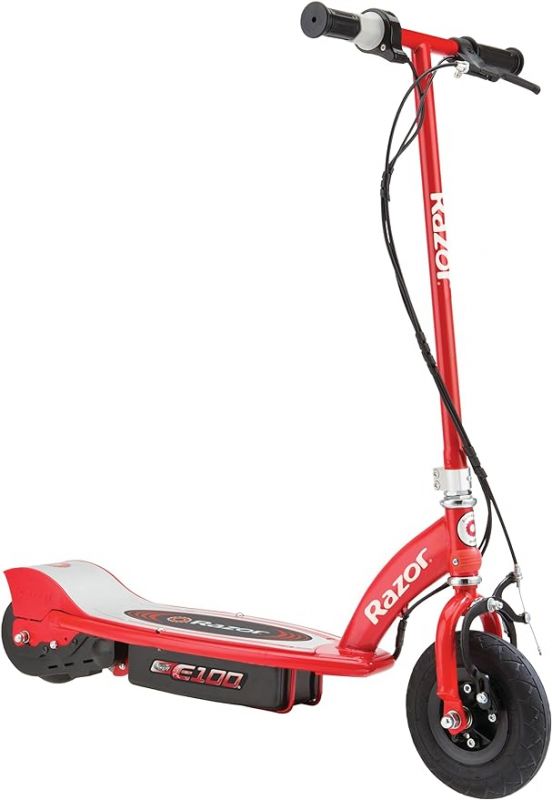Discover the Key Advantages of Bicycling in City Environments
- Maximizing Your Daily Commute Time
- Plan Your Route
- Time Management Techniques
- Finding Safe Cycling Routes in the City
- Local Cycling Maps
- Community Groups and Resources
- How Cycling Improves Your Health and Well-being
- Strengthening Muscles and Bones
- Improving Mental Health
- Saving Money on Transportation Costs
- Reducing Your Carbon Footprint While Cycling
- Optimize Your Route
- Maintain Your Equipment
- Building a Cycling Community in Urban Settings
- Q&A:
- What are the main benefits of riding a bicycle in urban areas?
- How does cycling help with mental health in urban settings?
- Is cycling a safe way to travel in a city?
- What should I consider before starting to cycle in an urban environment?
- Reviews
Choose cycling as your primary mode of transport and cut commuting time significantly. Studies show that cyclists can reach destinations 20% faster than those in cars during rush hours.
Improve your health with every pedal stroke. Engaging in regular cycling can boost cardiovascular fitness, build muscle strength, and enhance joint mobility, contributing to overall well-being.
Reduce your carbon footprint effortlessly. Opting for two wheels instead of four minimizes greenhouse gas emissions, making a positive impact on the environment.
Experience cost savings by eliminating fuel expenses, parking fees, and maintenance costs associated with motor vehicles. Commit to cycling and watch your monthly budget improve.
Discover your city like never before. Two-wheeled journeys allow for a more intimate exploration of local culture, hidden gems, and scenic routes often missed when driving.
Maximizing Your Daily Commute Time
Integrate a multi-modal approach. Combine cycling with public transport to enhance flexibility and reduce time spent on the road.
Plan Your Route
Utilize mapping applications to identify bike lanes, shortcuts, and less congested streets. This will help you avoid traffic and reach your destination faster.
Time Management Techniques
- Set Clear Goals: Establish your arrival time and work backward to determine your departure.
- Track Travel Time: Keep a log of your trips to identify patterns and adjust your schedule accordingly.
- Be Prepared: Organize your gear the night before to eliminate morning delays.
Incorporate regular assessments of your commuting strategy. Adjust your route and schedule based on seasonal changes or traffic patterns to continually optimize your travel time.
Finding Safe Cycling Routes in the City
To locate secure paths for two-wheeling, utilize community apps like Strava or Komoot. These platforms allow users to share their preferred routes, highlighting bike lanes and less congested streets. You can filter for popularity and safety ratings.
Local Cycling Maps
Check city or regional cycling maps available through local government websites. These often indicate bike trails, dedicated lanes, and areas with traffic calming measures. Download or print them for easy access while planning your rides.
Community Groups and Resources
Engage with local cycling clubs or forums. Members frequently post insights about safe routes, recent construction affecting streets, and events promoting safe cycling. Networking with experienced cyclists can yield valuable recommendations for navigating the city safely.
How Cycling Improves Your Health and Well-being
Engaging in regular cycling can lead to significant cardiovascular enhancements. A consistent schedule of 150 minutes per week can reduce the risk of heart disease by 30-50%. Aim for a pace that elevates your heart rate, targeting around 70-85% of your maximum heart rate for optimal results.
Strengthening Muscles and Bones
This activity effectively targets the lower body, including the quadriceps, hamstrings, calves, and glutes, contributing to muscle development. Incorporating hill climbs or interval training improves resistance and builds bone density, which is crucial in preventing osteoporosis.
Improving Mental Health
Cycling releases endorphins, the body's natural mood lifters. A study indicates that just 30 minutes of activity can decrease symptoms of anxiety and depression. Setting a regular schedule of cycling sessions can enhance emotional resilience and overall happiness.
Additionally, cycling outdoors exposes you to natural light, which boosts serotonin levels, further aiding mood enhancement. Keeping your rides consistent and incorporating variety can lead to higher satisfaction and engagement in this physical activity.
Saving Money on Transportation Costs
Switch to using a cycle for local commuting and save thousands annually on transportation expenses. For instance, a monthly public transport pass can cost around $100. This adds up to $1,200 a year, while maintaining a two-wheeler incurs minimal costs in repairs and maintenance, often amounting to less than $200 annually.
Fuel expenses from a car can range from $1,000 to $3,000 per year, depending on usage. It's possible to bypass these altogether when choosing cycling. Furthermore, many cities offer free parking for two-wheeled vehicles, cutting costs associated with parking fees.
Investing in a reliable cycle now can lead to substantial savings in the long run, especially considering rising fuel prices and public transport rates. Budget for helmets, lights, and safety gear, which, over time, remain a fraction of what you would pay for a car or bus fare.
Insurance for a two-wheeler is usually far cheaper or even optional, contrasting sharply with the mandatory insurance required for motor vehicles. By making this switch, you can reallocate saved funds towards other essential areas, such as dining out or leisure activities.
Finally, consider using cycling as a means of exercise, which not only promotes health but avoids potential medical costs linked to sedentary lifestyles. Clarity in budgeting for transportation shows that two-wheeled commuting is not just economical, but also beneficial to personal well-being.
Reducing Your Carbon Footprint While Cycling
Choosing to pedal instead of drive can significantly lower carbon emissions. When you cycle, you emit zero greenhouse gases, directly contributing to cleaner air.
Optimize Your Route
Select the most direct and least congested paths. Use cycling apps to find routes that avoid heavy traffic and minimize stop-and-go situations, which waste energy and time.
Maintain Your Equipment
Regularly check tire pressure and ensure that your bike is well-oiled. A well-maintained cycle requires less effort, making each ride more environmentally friendly.
Opt for sustainable gear and accessories. Look for items made from recycled materials or those that are biodegradable.
Engage in car-free days or challenges to increase your cycling frequency and raise awareness about alternatives to driving. Sharing your experiences can inspire others to make similar choices.
Your commitment to cycling not only benefits personal health but also contributes to a more sustainable planet. Make every trip count by cycling consciously and smartly.
Building a Cycling Community in Urban Settings
Organize regular group rides to create connections among enthusiasts. Schedule these events weekly or monthly at consistent times, covering different routes to explore various neighborhoods.
Create local online forums or social media groups. Use platforms like Facebook or Meetup to facilitate discussions, share tips, and highlight cycling-related activities and local cycling shops.
Collaborate with city planners to advocate for cycling-friendly infrastructure. Work together on projects that improve safety and accessibility for two-wheeled transport, including dedicated lanes and secure parking options.
Host workshops and activities that educate new riders about bike maintenance and safety practices. Providing these resources encourages participation and builds confidence within the community.
Participate in local events like fairs or festivals with booths dedicated to biking. This visibility not only raises awareness but also showcases community programs and encourages newcomers to join.
Encourage local businesses to support cycling through discounts for cyclists or sponsorships of cycling events. This partnership strengthens community ties and gives businesses a chance to engage with potential customers.
Celebrate achievements and milestones, whether it's a charity ride or reaching a collective distance goal. Recognizing efforts motivates individuals and reinforces the sense of belonging in the cycling network.
Q&A:
What are the main benefits of riding a bicycle in urban areas?
Riding a bicycle in urban areas offers numerous advantages. Firstly, it promotes physical fitness as cycling is an excellent cardiovascular exercise. Additionally, it reduces traffic congestion since bicycles take up less space than cars. This can lead to shorter commute times. Choosing a bicycle also has environmental benefits, as it produces no emissions, contributing to cleaner air quality in cities. Lastly, cycling can often be a more economical mode of transportation, saving money on fuel and parking costs.
How does cycling help with mental health in urban settings?
Cycling can significantly enhance mental health, especially in busy urban environments. The act of riding a bike allows individuals to escape the hustle and bustle of city life, providing a sense of freedom. Physical activity like cycling releases endorphins, which can reduce stress and anxiety. Moreover, spending time outdoors while cycling connects people with nature and their surroundings, further improving mood and mental well-being. Regularly engaging in this form of exercise can lead to better overall mental clarity and focus.
Is cycling a safe way to travel in a city?
Safety while cycling in urban areas can vary depending on the city and its infrastructure. Many cities are increasingly developing bike lanes and routes to ensure safer travel for cyclists. Wearing a helmet, following traffic rules, and being aware of surroundings can greatly enhance safety. It is also beneficial to research and choose routes that are known to be bike-friendly. Joining community cycling groups or adhering to local cycling resources can provide insights on how to navigate safely.
What should I consider before starting to cycle in an urban environment?
Before starting to cycle in an urban area, it is important to consider a few key factors. First, assess your own cycling skills and comfort level with urban traffic. Choose a bicycle that suits your commuting needs, whether it's a road bike for speed or a more robust option for various terrains. Familiarize yourself with local traffic laws regarding cyclists, and always prioritize safety gear, such as helmets and reflective clothing. Additionally, plan your route in advance to identify bike lanes and avoid high-traffic areas as much as possible.
Reviews
Emma Wilson
I recently read "Top Benefits of Riding a Bicycle in Urban Areas," and I couldn't agree more with the insights shared. Riding a bicycle in the city is such a refreshing experience. It makes daily commutes feel less burdensome. Instead of being stuck in traffic, I can enjoy the fresh air and get some exercise at the same time. The book highlights how cycling reduces stress and improves mental health. I definitely felt an increase in my overall mood since I started biking to work. Plus, it's great for the environment. Making a small switch from driving to biking feels rewarding, knowing I'm contributing to a cleaner city. The tips on safety and choosing the right bike were particularly helpful. I now feel more confident riding around town. I recommend this read to anyone considering cycling as an alternative means of transportation. It's not just good for you, but it also adds an enjoyable aspect to everyday life. Overall, this book made me appreciate my bike rides even more!
SteelKnight
I recently read "Top Benefits of Riding a Bicycle in Urban Areas" and found it quite insightful. The author highlights several advantages of biking in cities that resonate with me. Firstly, the environmental impact is clear; using a bicycle reduces pollution and traffic congestion. I appreciate how it encourages a greener lifestyle, which is something I strive for. Additionally, the health benefits are impressive. Riding regularly has boosted my fitness levels and improved my mood. The accessibility of biking in urban settings makes it a convenient option for daily commutes, helping me save on transport costs. I also liked the social aspect mentioned. Biking often brings people together, whether it's through community rides or simply exchanging smiles with fellow cyclists on the road. Overall, this read reinforced my commitment to biking as a primary mode of transport. It's a practical choice that benefits both my well-being and the environment. Highly recommend it to anyone considering making the switch!
David Brown
I've been using the guide "Top Benefits of Riding a Bicycle in Urban Areas", and I must say it really opened my eyes. The information provided is practical and relatable, especially for someone like me who navigates through city life daily. The points on health benefits are spot on. I've noticed an improvement in my fitness level since I started cycling regularly. The section about saving money on transport has also proven true; it's a great way to cut down on commuting expenses. I appreciate how the guide highlights the environmental impact of cycling. It feels good to contribute positively by reducing my carbon footprint. The tips on safety and route planning are helpful too; they made me more confident about biking in busy streets. Overall, this resource is a great read for anyone considering cycling as a primary mode of transportation in urban settings. Highly recommend it!
Michael
I've recently started riding a bicycle in the city, and I must say, it's been a rewarding experience. The first benefit I noticed is the significant improvement in my physical fitness. Cycling provides a great cardio workout without the strain on joints that running can sometimes cause. Another major advantage is avoiding traffic congestion. There's something refreshing about gliding past stopped cars during rush hour. It saves time and reduces frustration, making my daily commute much more enjoyable. On top of that, riding a bike allows me to connect with the environment around me. I can explore different neighborhoods and discover unique local spots that I would have missed while driving. Finally, there's the positive impact on the planet. Biking reduces my carbon footprint, contributing to a cleaner city. It's fulfilling to know I'm doing my part for the environment. In short, cycling in urban areas has improved my health, saved me time, enriched my city experience, and helped the planet. Highly recommend giving it a try!
Andrew Williams
I recently read "Top Benefits of Riding a Bicycle in Urban Areas," and I found it quite enlightening. The text highlights how cycling can improve physical health and mental well-being, which is something I've personally experienced. Living in the city, I've noticed that biking not only helps me stay active but also reduces stress. The article also points out the environmental advantages, like reducing carbon emissions, which resonates with my desire to contribute positively to the planet. What struck me was the emphasis on saving money-using a bike significantly cuts down on transport costs. Plus, finding parking spaces is no longer a headache! Another benefit discussed is how cycling enhances local exploration. I've discovered parts of my city I would never have seen from a car. In summary, this read reinforced my commitment to cycling as a practical choice for urban living. It's a fantastic way to stay fit and engaged with my surroundings. I highly recommend this piece to anyone considering adopting this mode of transport.
Daniel
I recently read "Top Benefits of Riding a Bicycle in Urban Areas" and found it incredibly insightful. The article highlights the numerous advantages of biking in cities, which I can personally relate to. As someone who bikes daily, I appreciate the way it addresses topics like reducing traffic congestion and improving personal health. I used to be stuck in traffic for hours, but switching to a bicycle has not only saved me time but also made my commute more enjoyable. The piece also touches on environmental benefits, which is a big plus for me. It's satisfying to know that I'm contributing to cleaner air while staying active. The writing style is approachable, making it easy for anyone to grasp the benefits of cycling. I especially liked the tips about safe biking practices in urban settings. If you're considering biking as a mode of transport, this article is a great starting point. It effectively captures the perks of biking, motivating me to keep pedaling through the city!







